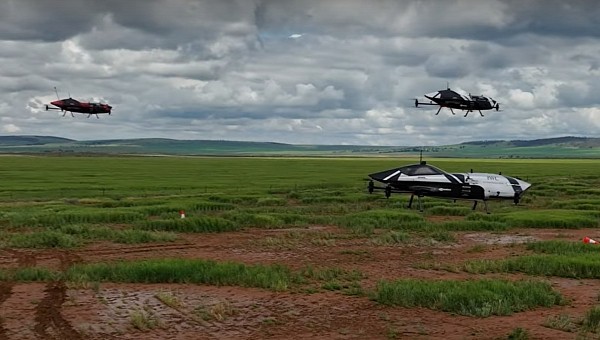You’ve probably heard about the Airspeeders, the electric flying cars specifically designed for racing. Alauda Aeronautics just reached another milestone on the way to this innovative racing series – three Speeders were successfully flown together during a test flight in South Australia.
Back in 2016, Alauda Aeronautics started testing a pioneering type of flying car that wasn’t meant for regular commercial operations, but for the thrills and high performance of racing. Today, the Australian builder is proud to have completed more than 250 test flights, on its way to launching the first racing series for flying electric cars.
Last year, Alauda completed the first-ever dual test flight for the Airspeeder. This year, it stepped things up a notch, going from two to three. Three of these futuristic air vehicles were flown in close proximity, during a testing campaign in South Australia, held in September.
This was not just a company first, but an industry first. The goal of multiple flying cars being able to compete safely and effectively is now much closer to reality.
And it’s not just about the craft itself, but also about the communication network. With or without a pilot onboard, these flying cars are able to race closely without physically touching, thanks to the advanced technology for near real-time data and connectivity.
These innovative connectivity solutions were developed together with partners such as Telstra Purple and Amazon Web Services. Telstra’s virtual race control system is similar to those used for aircraft safety in commercial aviation. Through this system, ground crews can receive the essential technical data of the flying cars in near real time.
The Airspeeder claims an output of 320 kW, and the ability to accelerate to 62 mph (100 kph) in less than three seconds. At 287 lbs (130 kg) it’s relatively lightweight, but sturdy enough to lift more than half of its weight.
Last year, Alauda completed the first-ever dual test flight for the Airspeeder. This year, it stepped things up a notch, going from two to three. Three of these futuristic air vehicles were flown in close proximity, during a testing campaign in South Australia, held in September.
This was not just a company first, but an industry first. The goal of multiple flying cars being able to compete safely and effectively is now much closer to reality.
And it’s not just about the craft itself, but also about the communication network. With or without a pilot onboard, these flying cars are able to race closely without physically touching, thanks to the advanced technology for near real-time data and connectivity.
These innovative connectivity solutions were developed together with partners such as Telstra Purple and Amazon Web Services. Telstra’s virtual race control system is similar to those used for aircraft safety in commercial aviation. Through this system, ground crews can receive the essential technical data of the flying cars in near real time.
The Airspeeder claims an output of 320 kW, and the ability to accelerate to 62 mph (100 kph) in less than three seconds. At 287 lbs (130 kg) it’s relatively lightweight, but sturdy enough to lift more than half of its weight.









